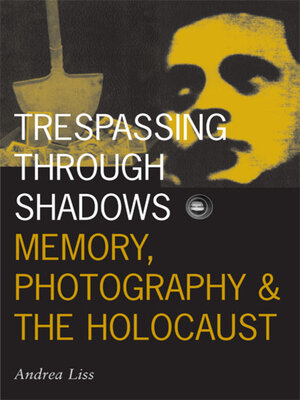Trespassing Through Shadows
ebook ∣ Memory, Photography, And The Holocaust · Visible Evidence
By Andrea Liss

Sign up to save your library
With an OverDrive account, you can save your favorite libraries for at-a-glance information about availability. Find out more about OverDrive accounts.
Find this title in Libby, the library reading app by OverDrive.



Search for a digital library with this title
Title found at these libraries:
| Library Name | Distance |
|---|---|
| Loading... |
Photographs of the Holocaust bear a double burden: to act as history lessons for future generations so we will "never forget" and to provide a means of mourning. In Trespassing through Shadows, Andrea Liss examines the inherent difficulties and productive possibilities of using photographs to bear witness, initiating a critical dialogue about the ways the post-Auschwitz generation has employed these documents to represent Holocaust memory and history. Focusing on a wide range of photographic displays and museum installations as well as such films as Shoah and Schindler's List, Liss questions the role of photography as social practice. She critically analyzes the transformations that documentary and more intimate photographs undergo as they are mediated through contemporary exhibition techniques, both at the institutional level of the United States Holocaust Memorial Museum in Washington, D.C., and in the hands of a group of contemporary artists and photographers including Art Spiegelman, Judy Chicago and Donald Woodman, Christian Boltanski, Suzanne Hellmuth and Jock Reynolds, and Anselm Kiefer. Liss is especially interested in examining the uneasy intersections between the demand for historical accuracy and calls for respectful remembrance of those who were violated. Because of the horror captured in some of these photographs, Liss explains, the modern viewer is inevitably positioned to replicate the dynamic of victimhood and martyrology, rather than experience retrospective empathy for those pictured. Liss acknowledges the indispensability of documentary photographs even while formulating necessary new questions about contemporary uses of such photographs to create pathways of access to the events. Ultimately, the dilemmas of memory that Liss addresses are central to discussions of documentary practice. Timely and lucidly crafted, Trespassing through Shadows provides crucial insight into debates around representational strategies.







